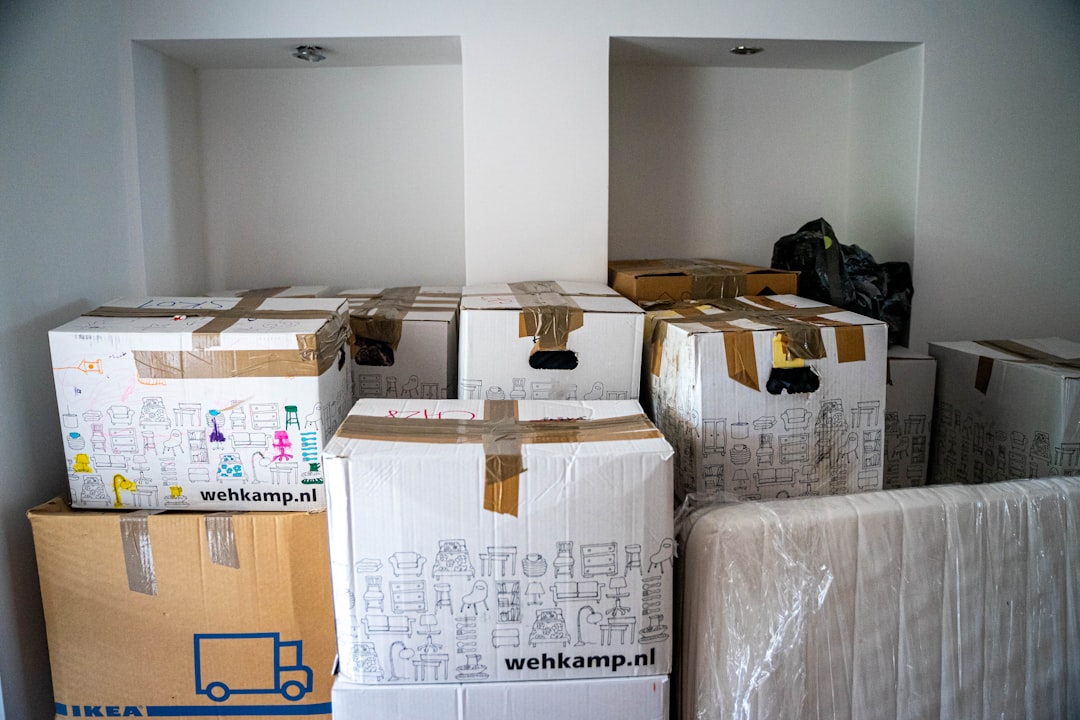 Photo from Unsplash
Photo from Unsplash
Originally Posted On: https://helpmovingandstorage.com/2025/02/18/which-room-should-you-pack-first-during-your-move/
Which Room Should You Pack First During Your Move?
Overview
Whether you’re planning a relocation for work or you’re moving to join loved ones, you’ll need to know how to pack up and protect all your belongings so they’ll weather your move unharmed. In this blog post, Help Moving And Storage’s packing and moving specialists explain which rooms and items you should pack first, how a solid packing plan ensures a smoother moving process, which supplies you’ll need, and what to leave out or leave behind. We also cover how to safeguard specialty items and give you guidance on when to reserve your movers, truck, and any equipment. When you’re done reading, you’ll have a roadmap that helps you get to your next destination with fewer problems.
Highlights
- How a strategic packing plan facilitates a smooth moving experience
- What packing supplies you’ll need
- Where to start packing
- What you should pack last
- How to pack specialty items
- How early you should reserve movers
Introduction
Moving can bring about a whirlwind of emotions. Along with that touch of excitement can be uncertainty and stress. No matter the catalyst for your move, realizing it’s all riding on your shoulders can feel overwhelming. Thoughts may race through your mind as you worry about everything from packing up your life to settling into a new place and adjusting to unfamiliar surroundings.
What if we told you that how you prepare for your move goes a long way toward how relaxed and stress-free you’ll feel when you get there? It’s true. Taking the steps we’re about to share will make packing and moving much more manageable. You’ll be glad you read this article when you’re settling into your new space, as you’ll be able to find all the boxes and belongings you’re looking for easily.
How Does a Strategic Packing Plan Help Facilitate a Smooth Moving Experience?
Strategic packing ensures a smooth, stress-free moving experience. Efficiently organizing your belongings, labeling boxes clearly, and packing items logically will help you save time, reduce frustration, and make unpacking and setting up your new space a breeze.
Thoughtful packing minimizes the risk of damage, ensures essential items are easily accessible, and helps your moving day go as well as possible. Instead of scrambling to find necessities or dealing with disorganized boxes, you’ll have a structured plan that keeps everything in its place. With some preparation and strategy, you can turn your moving process into a well-coordinated transition rather than a chaotic scramble.
Which Packing Supplies Will You Need?
Having the right packing supplies on hand will help you keep your belongings safe and organized throughout your moving process. A well-prepared packing kit ensures that fragile items are protected, boxes are easy to carry, and everything arrives at your new home in one piece.
Here’s what you’ll need:
- Sturdy moving boxes in a variety of sizes
- Packing tape and dispenser
- Bubble wrap and packing paper
- Furniture covers and stretch wrap
- Labels and markers
- Ziplock bags and small containers
- Scissors and box cutters
- Moving blankets
- Dollies and straps
With these, you’ll be able to pack efficiently, protect your valuables, and organize your belongings for logical loading and unloading.
Next, we’ll discuss which rooms to pack first to make your move as stress-free as possible.
Where Should You Start Packing for Your Move?
The best way to start packing for your move is to focus on items you don’t use every day. This helps you get a head start without disrupting your routine. Begin with seasonal and rarely used belongings, like holiday decorations, outdoor gear, yard tools, and off-season clothing. You might store these items in your garage, basement, attic, or storage closets, making them ideal starting points for packing.
Once you’ve boxed these non-essential items, you can gradually move to rooms and spaces you use less frequently, such as guest rooms, formal dining areas, and so on. This method allows you to pack systematically without cluttering your living space or creating unnecessary stress as moving day approaches.
Which Items Should You Pack First?
Packing strategically makes a world of difference. Start with non-essential items that won’t impact your daily routine.
Here’s what to pack first:
- Seasonal items: Holiday decor, winter coats, summer beach gear, and sports equipment
- Storage room contents: Older furniture and unused appliances, party supplies, luggage, camping gear, old documents, storage bins, etc.
- Rarely used kitchenware: Special occasion dishes, extra pots and pans, or appliances you don’t use daily
- Books and decorative items: Books, picture frames, and curios
- Guest room essentials: Start packing guest bedding, furniture, and guestroom decorations you won’t use until you’re established in your new home
Boxing non-essentials first allows you to clear space and build momentum, making tackling the rest of your home easier.
What Should You Pack Last?
When you’re getting ready to move, the last things you should pack are the essentials you’ll need right up until your moving day and immediately upon arrival at your new home. These include daily toiletries, medications, a few changes of clothes, important documents, chargers, and basic kitchen supplies like a coffee maker, utensils, and non-perishable snacks.
You’ll also want to keep cleaning supplies, toilet paper, and hand soap accessible for last-minute tidying before you leave. Packing these items last ensures you won’t be frantically searching through boxes for necessities when you need them most. Instead, you’ll have everything within reach, making your transition as smooth and stress-free as possible.
Are There Items You Shouldn’t Pack?
While most of your belongings can be packed safely, certain items should never go into moving boxes due to safety concerns, legal restrictions, or practicality.
This includes:
- Hazardous materials: Items like paint, propane tanks, aerosols, pesticides, motor oil, and flammable liquids pose serious risks and are often prohibited by moving companies.
- Perishable food: Perishables, including frozen and refrigerated foods, can spoil during transit, leading to messes and odors.
- Valuables and sentimental items: Jewelry, cash, important documents, and sentimental keepsakes should always travel with you to prevent loss or damage.
- Plants: Many movers don’t transport live plants because of state regulations and the risk of damage. Consider moving them yourself or gifting them to friends.
- Firearms and ammunition: If you own firearms, be sure to notify your mover and check legal requirements before transporting them.
Checking with your moving company about restricted items will help you avoid last-minute surprises and ensure a hassle-free moving day.
How Do You Pack and Protect Specialty Items Like Pool Tables, Artwork, and Pianos?
Specialty items require extra care and handling so they arrive at your new home undamaged. Whether you’re moving a pool table, artwork, or a piano, following the right steps will alleviate a lot of hassle on your moving day.
Here’s what to do to protect these belongings.
Protecting Pool Tables
Pool tables are heavy and require disassembly before transport. A professional moving team can remove the legs, pockets, and felt, ensuring each part is securely wrapped and protected. The slate, which is extremely fragile, should be padded and transported separately.
Packing Artwork and Mirrors
Framed paintings, glass-covered prints, and mirrors should be wrapped in bubble wrap and secured between cardboard sheets. Use specialty picture boxes for added protection, and always transport these items upright to reduce the risk of breakage. Label these boxes as “Fragile” and “This Side Up” to ensure careful handling.
Packing and Moving Pianos
Due to its size, weight, and delicate inner mechanics, moving a piano requires specialized equipment and an experienced team. Piano movers use dollies, straps, piano boards, and padding to prevent damage and ensure your instrument can travel without injury or harm to it or your floors and walls.
Safeguarding Antiques and Heirlooms
Wrap fragile antiques in soft packing paper, followed by bubble wrap, and store them in sturdy, well-padded boxes. Secure heavier antiques with moving blankets and straps to prevent shifting during transport. If you’re concerned about protecting high-value specialty items, consider purchasing additional moving insurance and working with a team specializing in fragile and oversized item transportation.
How Early Should You Reserve Your Movers and Truck?
Consult with your preferred moving company to reserve your movers and truck as soon as you learn about your relocation. It’s the best way to secure the team, equipment, and services you need on your desired moving date.
Moving companies and rental trucks book up quickly, especially during peak seasons, so advanced planning ensures you can access the best availability and pricing.
Here are some general guidelines:
- Local moves: Book 4 to 8 weeks in advance, especially if you’re moving in the summer or near the end of the month.
- Long-distance moves: Book 8 to 12 weeks in advance, as cross-country movers require more coordination and scheduling.
If you’re moving during a busy season—usually May through September—or a holiday, it’s best to book as early as possible to avoid last-minute panic and higher costs.
Pack With a Plan and Move Into Your New Space Worry-Free
Moving doesn’t have to be a taxing ordeal. Following a structured packing plan, as well as starting with non-essential items and working toward daily necessities will make your transition smoother and more organized. Avoid packing hazardous materials, take extra care with fragile or high-value items, and book your movers early to secure the best options for your move.
With the right preparation, you can step into your new home with minimal stress and look forward to everything being in its place quickly. Need moving assistance? Contact Help Moving And Storage today for expert packing, loading, transport, and unloading support.







